Vegetables
Vegiforms
Back in the 1980s, Richard Tweddell III invented a way to grow vegetables into shapes such as faces, hearts, pop bottles, etc. by using plastic molds. As he wrote: "Just plant regular seeds in your garden, in the usual way. When the young vegetable forms, place it into the two part plastic mold and watch it grow to fill the mold. That's all there is to it."I don't know why his invention never caught on. If I had a vegetable garden, I'd use them. But perhaps the idea of vegetables shaped like small human heads didn't appeal to enough people.
More info: archived vegiforms website, Tweddell's obituary, vegiform patent
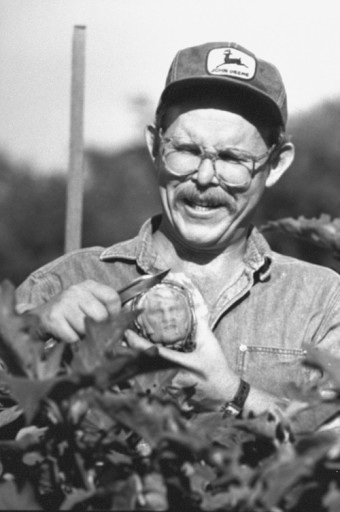
Tweddell with a vegiform
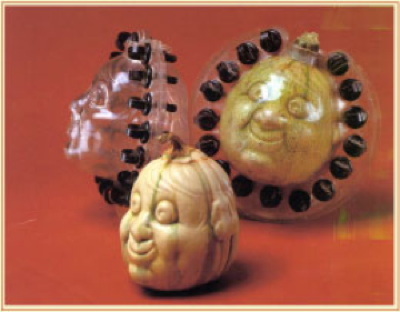
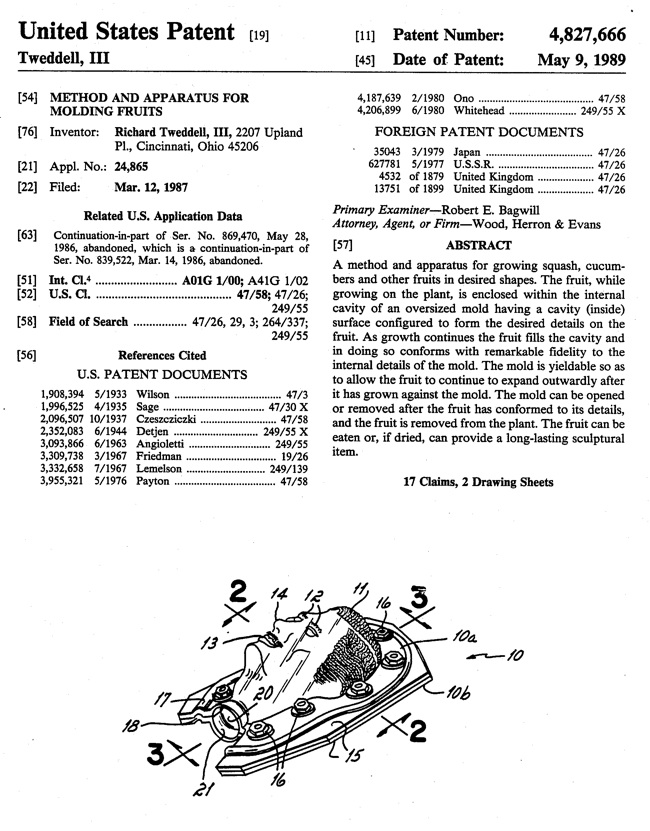
Posted By: Alex - Tue Dec 12, 2023 -
Comments (4)
Category: Horticulture and Gardens, Patents, Vegetables
Constipation and Political Unrest
I haven't been able to figure out what the title of the article referenced below was, since I can't find archived copies of Blackwood's magazine from the 1970s. The hypothesis, "that a fundamental cause of the violence... in Irish politics may well be constipation," is strange. It might make one wonder about the role of constipation in other conflicts around the world.
The Melbourne Age - Sep 30, 1976
Posted By: Alex - Fri Nov 17, 2023 -
Comments (2)
Category: Violence, War, Vegetables, 1970s
American Vegetable Queen

Newsday - Aug 4, 1952
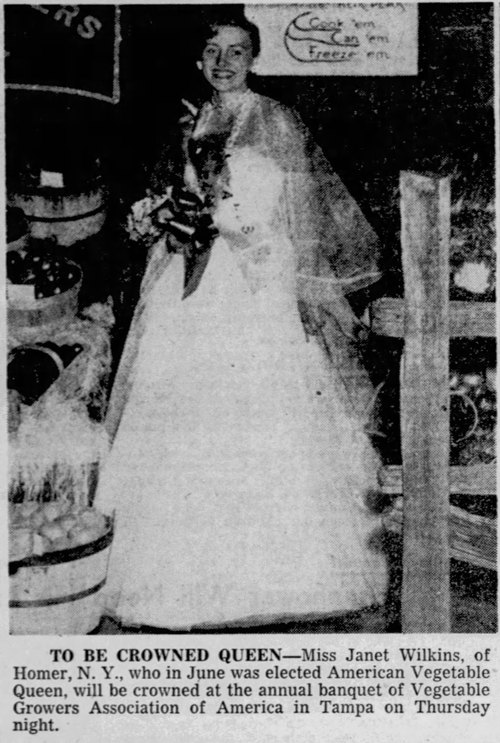
Tampa Tribune - Dec 2, 1952

Rochester Democrat and Chronicle - Aug 3, 1952
Posted By: Alex - Fri Oct 06, 2023 -
Comments (0)
Category: Awards, Prizes, Competitions and Contests, Vegetables, 1950s
Turtle-Tater
Sheila Stiltner sure seemed fascinated by the turtle-tater.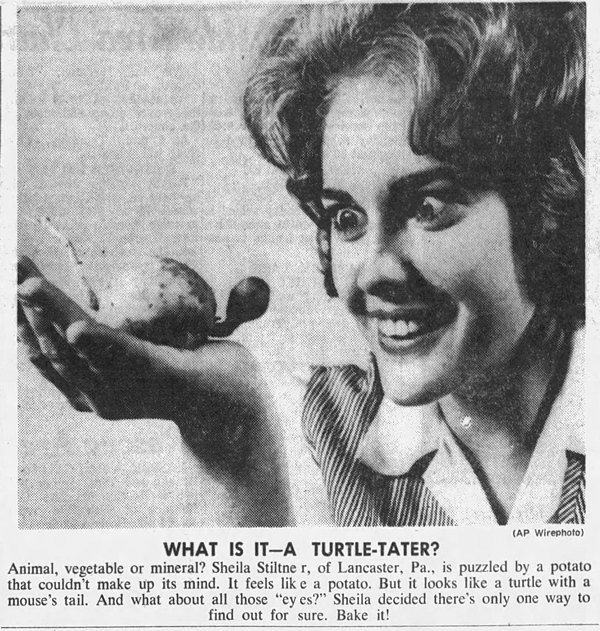
Newport News Daily Press - Aug 8, 1964
Posted By: Alex - Mon Nov 14, 2022 -
Comments (4)
Category: Vegetables, 1960s
Asparagus Divination
Jemima Packington divines the future by interpreting asparagus. She calls this the art of Asparamancer. She throws the asparagus in the air, and where they land tells her the future. Using this method, she claims to have correctly foreseen Brexit, Prince Philip's death, Theresa May's resignation, and the Queen's death.The latest thing that the asparagus have told her: "King Charles will take a step back, due to his age, and make William Prince Regent."
More info: express.co.uk
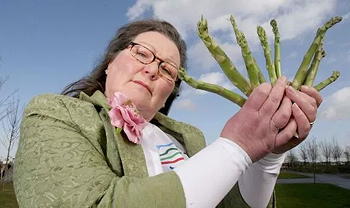
Posted By: Alex - Sat Sep 24, 2022 -
Comments (4)
Category: Predictions, Royalty, Vegetables
How to make a walking stick from cabbage
There's a type of cabbage that grows thick, woody stalks, and in the Channel Islands there's a tradition of making walking sticks out of it.Instructions from Countryside Publications:
If the leaves are left on too long the stalk becomes too thick for a proper walking stick and it will often branch out, trying to form limbs. Ideally, you need to remove the lower leaves when the stalk is slightly larger than walking stick size--about 1-1/4 to 1-1/2 inches in diameter. You can expect about 20 pecent shrinkage when dry. I think a diameter of about an inch is ideal for a walking stick...
The specific type of cabbage you need goes by a variety of names: 'cow cabbage,' 'Jersey cabbage,' or 'walking stick cabbage.' And yes, you can eat the leaves of this cabbage.
More info: wikipedia,
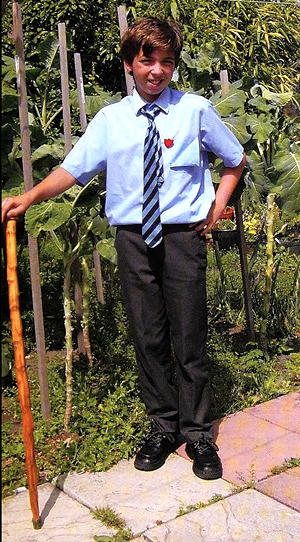
image source: Grow Your Own Monsters, by Nicola Davies and Simon Hickmott
Posted By: Alex - Sat Jul 09, 2022 -
Comments (1)
Category: Vegetables
Tomato calls 911 for help
Adding this to the 'vegetables' category, despite the controversy over whether tomatoes are fruits or vegetables.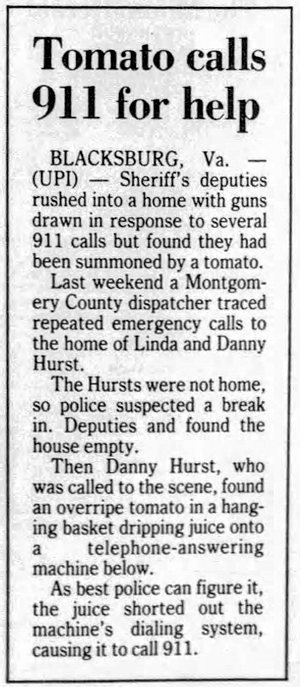
Miami Herald - Nov 10, 1990
Posted By: Alex - Wed Dec 15, 2021 -
Comments (2)
Category: Vegetables, 1990s
The Patented Carrot Rectal Dilator
In 1927, the Canadian patent office granted an unusual patent (CA 259317) to George L. Kavanagh. It was unusual because, while most patents describe some new type of gadget or gizmo, Kavanagh's invention simply consisted of a method of using a carrot.The problem Kavanagh had set out to solve was that of constipation in the elderly. The way he saw it, our rectums tend to grow more inelastic and shrunken as we age, and this leads to constipation. The solution, he concluded, was "gently dilating the anus and rectum until the organs are restored to their youthful size."
But what could be used as a dilator? Preferably something inexpensive and readily obtainable. That made him think of carrots.
A summary from his patent:

An added benefit of carrots, he noted, was that they come in a variety of different sizes. This would allow one to start with small carrots and work up to larger ones "until the desired result is obtained."
Unfortunately, Kavanagh submitted no drawings with his patent. But I did find a chart that provides a size comparison of different types of carrots, which could be potentially useful for anyone who wants to try out Kavanagh's method at home on an elderly relative.
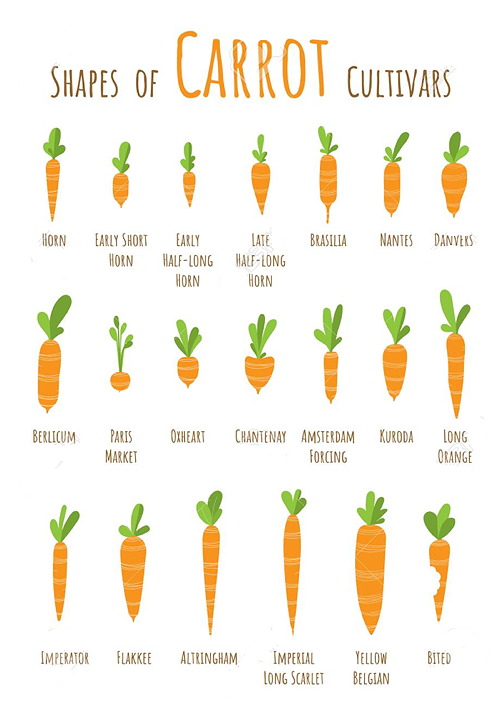
image source: 123rf.com
Update: Kavanagh also got a US Patent (No. 1,525,505) for his invention.
Posted By: Alex - Wed Nov 24, 2021 -
Comments (3)
Category: Health, Inventions, Patents, Vegetables, 1920s
Profit in Potato-Digging
Undated. I'm guessing it's late 19th Century. From OddBook.ca:Maybe I should give up this blogging gig and start digging potatoes!
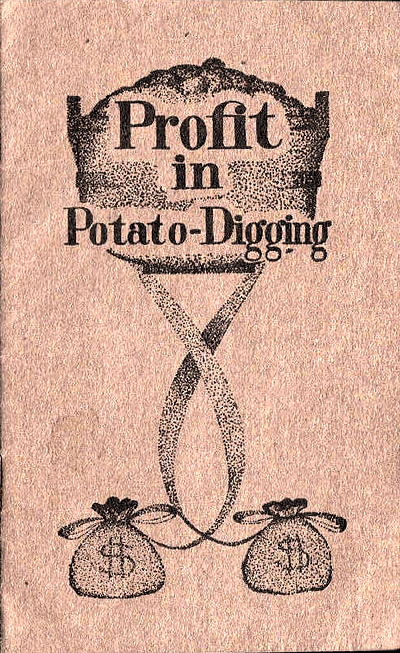
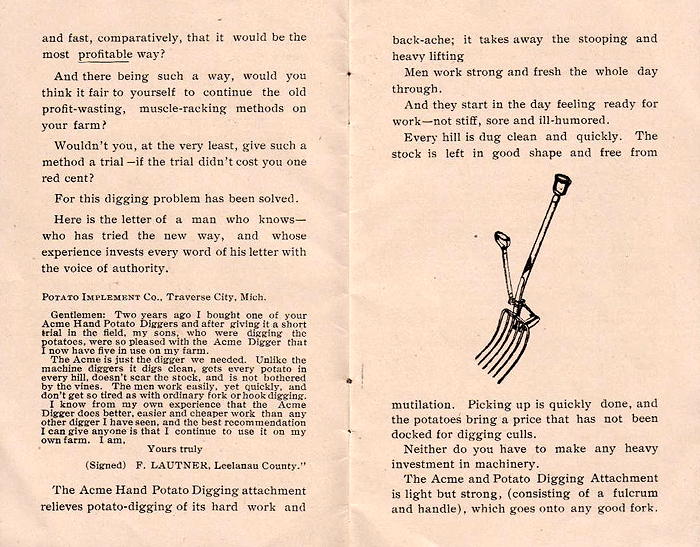
Posted By: Alex - Thu Apr 01, 2021 -
Comments (2)
Category: Self-help Schemes, Books, Vegetables, Nineteenth Century
Death by carrot juice
It was probably the enormous quantities of Vitamin A pills that Basil Brown was taking which actually killed him. Though the daily gallon of carrot juice certainly contributed.More info: NY Times
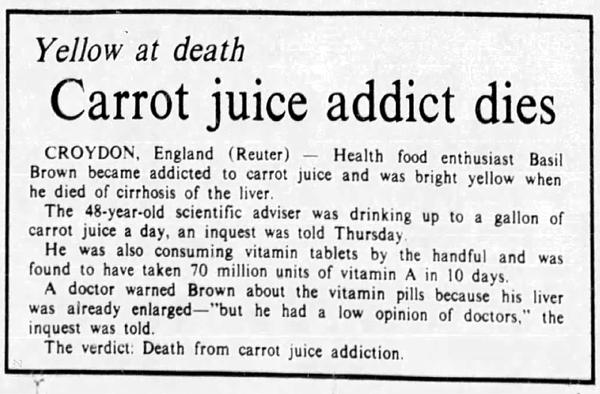
Ottawa Citizen - Feb 15, 1974
Posted By: Alex - Sun Jul 12, 2020 -
Comments (6)
Category: Death, Vegetables, 1970s

| Who We Are |
|---|
| Alex Boese Alex is the creator and curator of the Museum of Hoaxes. He's also the author of various weird, non-fiction, science-themed books such as Elephants on Acid and Psychedelic Apes. Paul Di Filippo Paul has been paid to put weird ideas into fictional form for over thirty years, in his career as a noted science fiction writer. He has recently begun blogging on many curious topics with three fellow writers at The Inferior 4+1. Contact Us |




